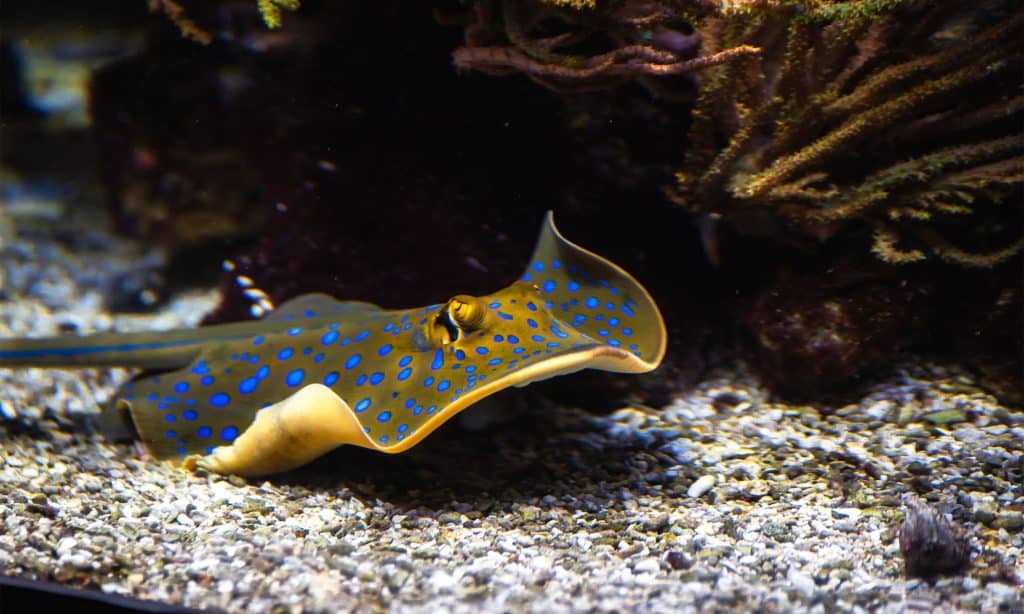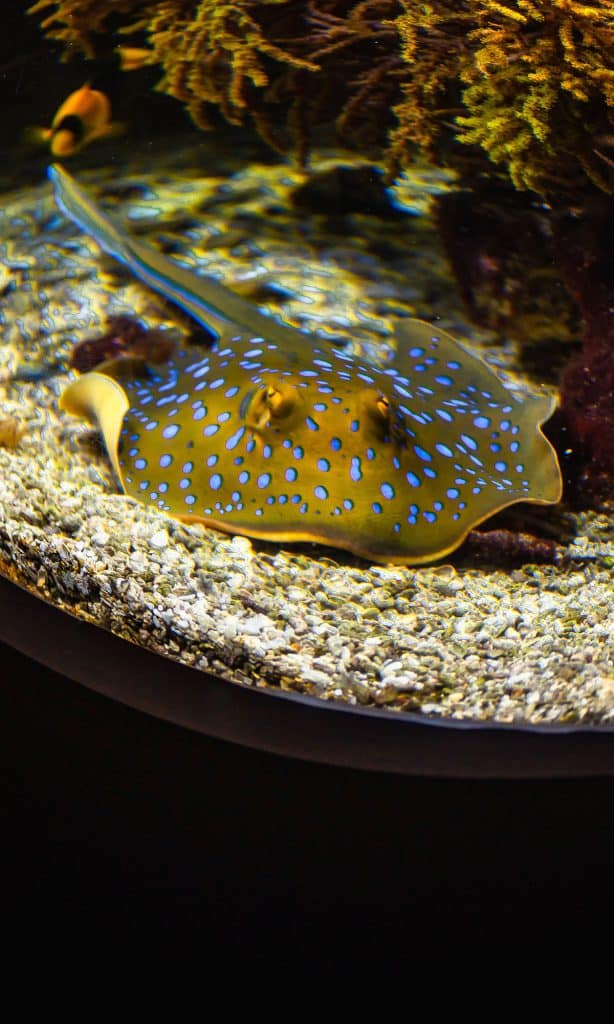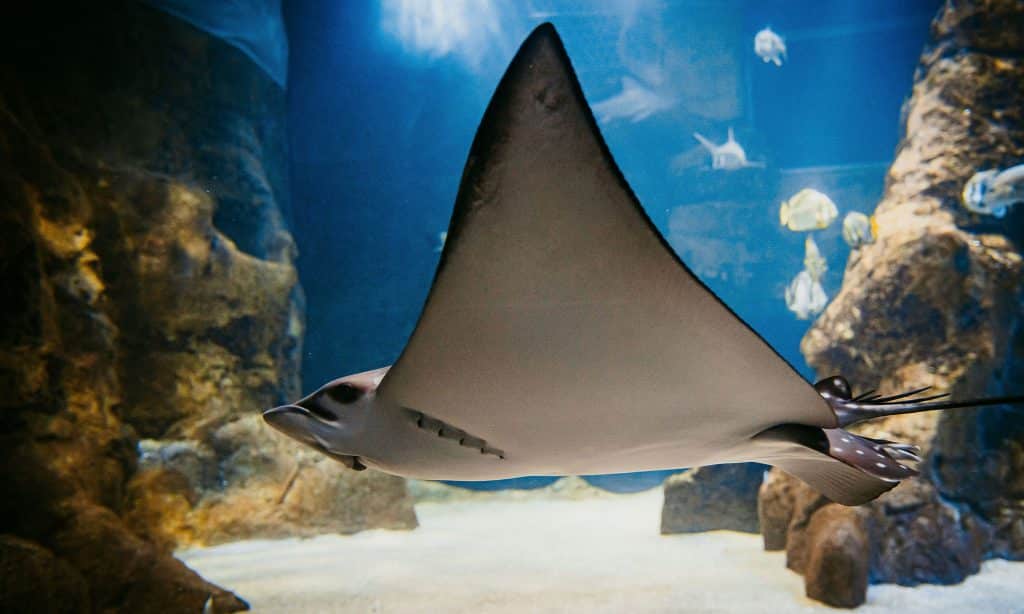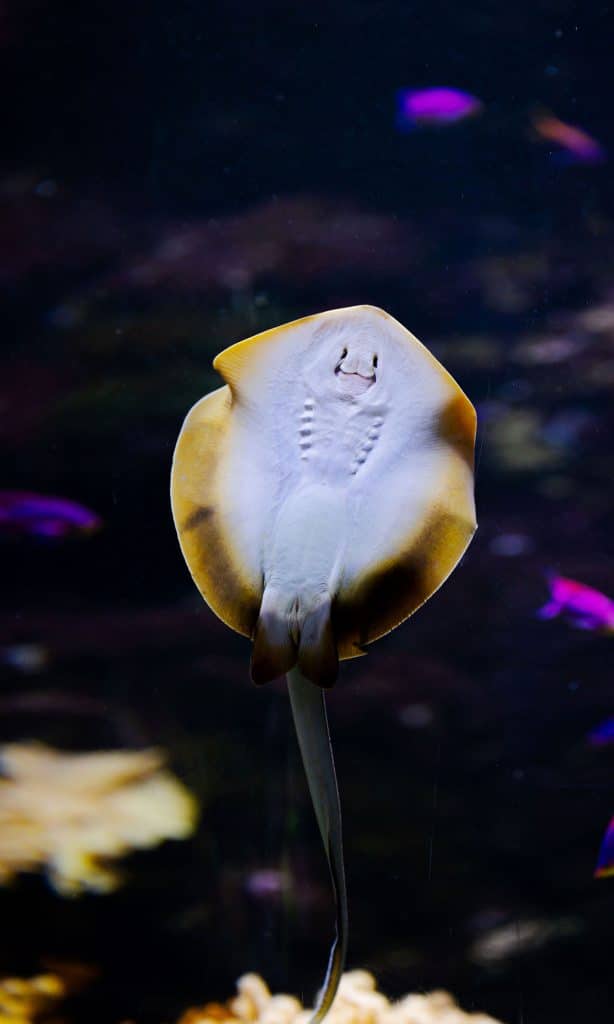Home > Life at the Biarritz Aquarium > Our animals > The rays
The rays
These graceful species glide through oceans all over the world. At the Aquarium de Biarritz, dive into their world and discover the many ray species that inhabit our tanks.
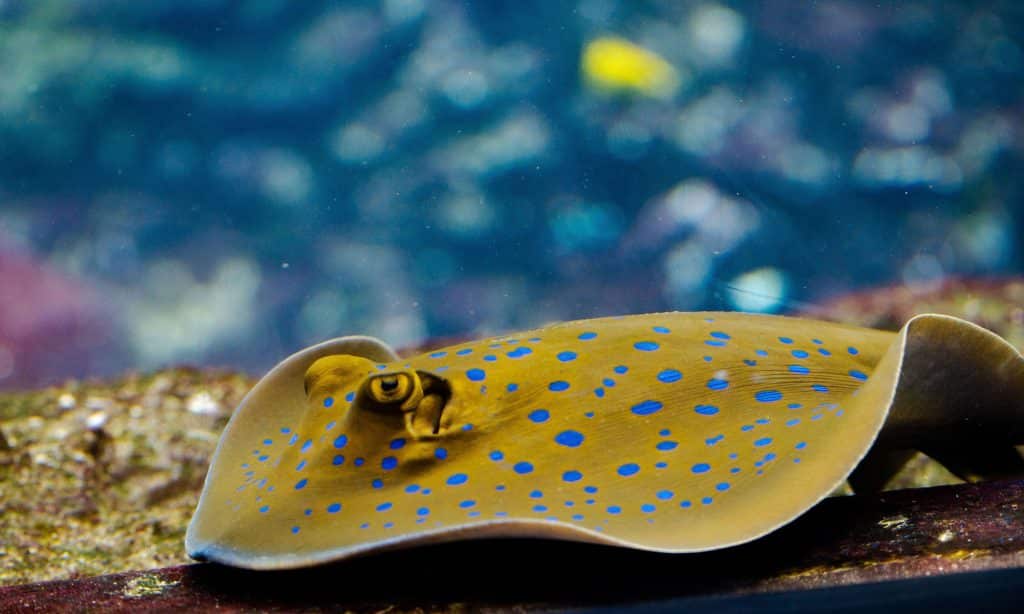
What do you know about rays?
They belong to the large family of cartilaginous fish, just like sharks. Their flattened bodies and wing-like fins allow them to move with unique elegance—like underwater flight. Unlike bony fish, rays have skeletons made entirely of cartilage, giving them remarkable flexibility.
A discreet but vital way of life
Rays are found in nearly all oceans—from shallow coastal waters to the deep sea. Some species lie on the seabed, hidden under sand to camouflage, while others, like eagle rays, swim through open water with wide, graceful movements. They play a crucial role in balancing marine ecosystems by regulating populations of mollusks and crustaceans.
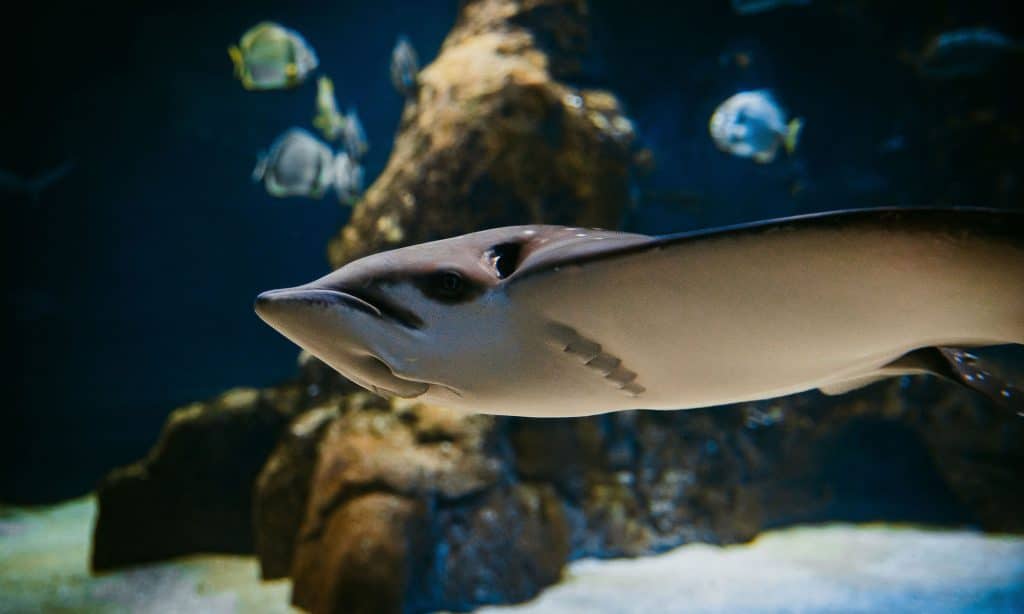
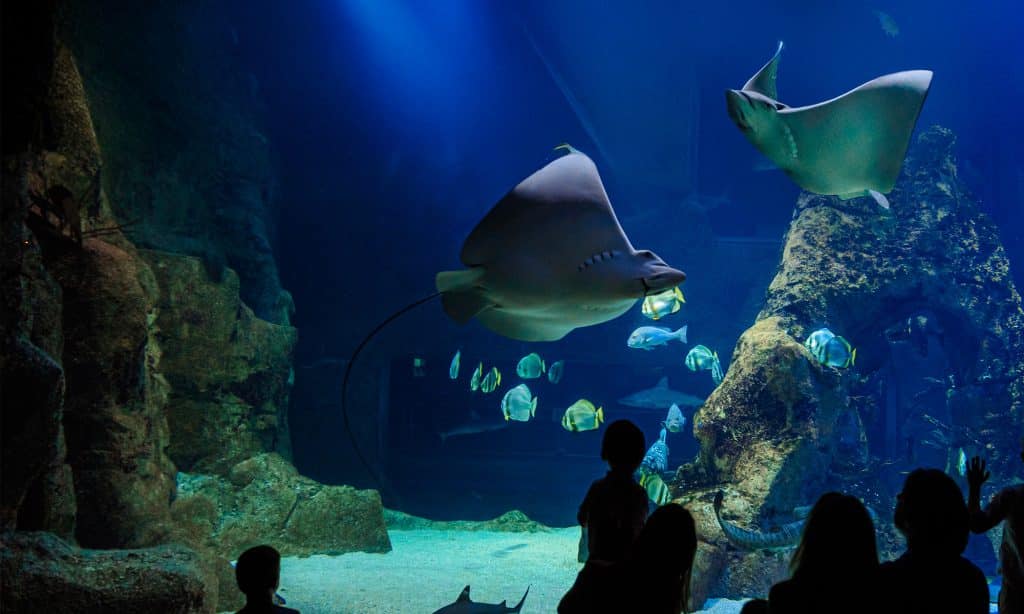
Reproduction of rays at the Aquarium of Biarritz
Eagle rays and blue-spotted rays are viviparous: they give birth to fully formed young that can swim and feed themselves from birth. These young develop inside their mother’s womb for several weeks, nourished by a system similar to a placenta. As part of its marine species conservation mission, the Aquarium of Biarritz has successfully bred several rays in recent years.
The ray species at the Aquarium de Biarritz
Frequently Asked Questions
Are rays dangerous animals?
Some species have a venomous barb on their tail, used only in self-defense. At the Aquarium de Biarritz, they live in a controlled environment and pose no threat to visitors.
How are they fed at the Aquarium?
Our caretakers provide them with a varied diet of fish, mollusks, and crustaceans, tailored to the specific needs of each species.
How does a ray birth happen?
Eagle rays and blue-spotted rays are viviparous: their young, fully formed and independent from birth, develop for several weeks in the mother’s womb thanks to a system similar to a placenta.
